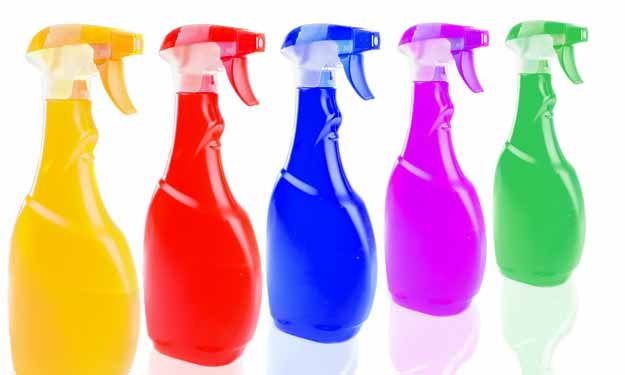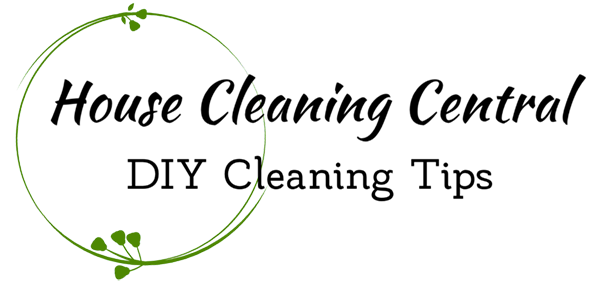How to Clean Surfaces Around the House

How to Clean Different Kinds of Surfaces
If you are looking to clean up your home and just don’t know where to start or what to use, here is a handy list of surfaces, supplies, and cleaning methods for the most common household areas.
Acrylic or Laminated Surfaces
Acrylic and laminates are both very popular finishes to have in homes today. Although a simple dusting just calls for a clean, lightly damp cloth – dirty surfaces need just a little bit more.
Prior to cleaning, lightly dust the surface.
- Fill a gallon bucket with warm water
- Add 1 teaspoon mild dish washing liquid, such as Ivory
- Dip a clean rag in the solution and wipe down surface
- When you have finished cleaning, use cool water to rinse with another clean rag, then wipe dry with a soft lint free cloth.
Using a dry cloth to dust is not recommended as this will just rub as much of the dust into the surface as you’re dusting up. Never use abrasive cleaners; this will scratch laminate and acrylic.
Household cleaners such as Windex and 409 should not be used as these can dull the surface of your acrylic or plastic piece.
Glass Surfaces
This recipe will work for most glass items found in the home such as tabletops, decorations, and mirrors that need a light cleaning.
Just add the following ingredients to a spray bottle:
- 1 cup rubbing alcohol
- 1 cup water
- 1 tablespoon white vinegar
This cleaning method will evaporate quickly for a streak free shine.
Cleaning Fingerprints from Stainless Steel Surfaces
Here’s a quick tip for removing fingerprints from stainless steel. I love the material but don’t like the messy fingerprints. This is so easy you won’t believe it. Ingredients listed below:
Cleaning with White Vinegar
White vinegar. Yep. That’s it! Just add white vinegar to a soft, lint free cloth and wipe the surface with the grain.
Using Baby Oil to Remove Fingerprints
If you don’t happen to have white vinegar but have baby oil in the house, you can use that as well. Clean the same as we mention using the white vinegar. When finished, buff with a clean, soft lint free cloth.
How to Clean a LCD TV or Computer Screen
These days most of us now have multiple computers or laptops, so why spend a lot for a commercial cleaning product when you can use something you probably already have in the house and it works just as well.
All you need is a little rubbing alcohol and a clean microfiber cloth.
- Place a small amount of rubbing alcohol on the cloth and gently wipe down the screen using a light amount of pressure.
- To get the edges and corners of the screen, use a foam swab and rubbing alcohol (cotton swabs will leave strands of cotton behind).
- Dry with a either a dry section of the cloth you just used or a clean, dry microfiber cloth.
These screens are fragile and can scratch so don’t use a rough cloth for cleaning. This can also be used on LCD TV screens.
Freshen Up the Surface of Your Carpets
This is a great, inexpensive way to freshen up any room in the house and I love it before we are hosting a holiday party. Before you vacuum, sprinkle a light layer on the carpet then vacuum.
Powdered Carpet Freshener Using Essential Oil
- 1 cup baking soda
- 10 to 15 drops of your favorite essential oil or combination of oils
Pour baking soda into a jar, like a mason jar if you have one. Add the essential oil of your choice then shake well to combine ingredients. Apply shaker lid to jar and then sprinkle on carpets and vacuum.
Some holiday essential oils might be pine, clove, cinnamon, frankincense. Other essential oils for everyday use might be lavender, chamomile, rose geranium.
Shaker lids can be purchased or you can make your own with heavy construction paper and tape.
Cleaning Hard Floor Surfaces
Hard floor surfaces are easy-to-clean and can last for years if cared for properly.
Using White Vinegar on Floors
NOTE: White vinegar is slightly acidic and should never be used on marble or stone surfaces as this can damage the surface.
Using white vinegar as a cleaning solution will clean your hard floor surfaces in no time.
- 1 cup vinegar
- 1 gallon warm water
Do not allow water to pool on floor. We use a nifty tool called a sh-mop to quickly towel dry floors. Drying the floor stops water spots from forming and picks up a surprising amount of dirt that could remain on the floor.
Use Murphy’s Oil Soap to Clean Marble
The best way to clean and shine your marble is to use a little Murphy’s Soap. That’s right – just add a few drops to 1 gallon of warm water and clean with a mop. Wipe dry with a clean cloth, towel or a sh-mop.
To keep your marble looking great for years, only use PH neutral cleaning solutions. Don’t use abrasives, alkaline (bleach and ammonia are two), or acidic (vinegar) cleaners. These will all etch and damage marble. Clean up spills immediately.
Cleaning, Disinfecting, and Deodorizing Surfaces with Bleach
Bleach can be used to clean, disinfect, sanitize, and deodorize just about any surface. Read manuals and know your surfaces as bleach can cause damage to some surfaces. It should not be used without diluting in water.
The general rule of thumb is to use only 1 tablespoon bleach to 1 gallon of water. If you are using a 32 ounce spray bottle, fill that almost to the top leaving room for about 1 1/2 teaspoons of bleach.
Bleach is a harsh chemical that should be used with care and kept out of reach of children. Never mix ammonia with bleach as it will create harmful fumes.
Common Cleaning Supplies
Cleaning your home requires the proper tools to get it done. Here is a list of some of the common cleaning supplies you may find yourself needing:
- Bucket or tote
- Broom
- Mop
- Vacuum
- Duster
- Cleaning rags and sponges
- Microfiber cloths
When you know what cleaners you need to get the job done it’s a lot easier. These surfaces and cleaning products just scratch the surface of what is available, but it’s a good start.

